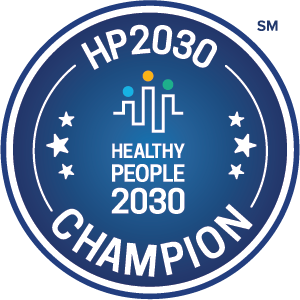ICAA Research Review, Volume 22, Issue 07
ICAA Research Review is published monthly for ICAA members. Complimentary issues are sent periodically to people who register.
In this issue
- Stats: Cognitive impairment risk 137% higher with sight problem
- Feeling younger boosts likelihood of successful rehab
- Game using dual-task exercises yields cognitive, physical benefits
- Everyday ageism more common among those in poor health
- Light exposure during sleep tied to obesity, diabetes, hypertension
- Tech Talk: Many digital health startups lack robustness
Stats: Cognitive impairment risk 137% higher with sight problem
Forty-four percent of older adults with untreated sight conditions may be at increased risk of dementia, according to a systematic review and meta-analysis of 16 studies involving more than 76,000 participants ages 50 and above. Further, the likelihood of having a cognitive impairment was 137% higher among people who had a sight problem compared to those who did not.
Though more research is needed, the results suggest that correcting sight problems in older adults -- for example, with glasses or cataract surgery -- might prevent cognitive problems and dementia.
"Our findings add to the growing evidence that fading eyesight is a risk factor for developing dementia," said lead author Beibei Xu, associate professor at Peking University. "Although the reasons behind this remain unclear, it suggests that diagnosing and treating eye conditions may be beneficial -- both to improve a person's quality of life and also to potentially slow down or stop memory loss."
"Our new results highlight the importance of regular eye examinations for older adults, enabling any potential problems with their vision to be spotted and treated early," Xu added. "They also suggest that any self-reported changes to a person's eyesight should not be ignored."
The authors noted, “individuals may need time to notice their sensory deficiency due to progressive adaptation in performing daily living tasks in the presence of an insidious decline in visual function."
SOURCE: Taylor & Francis Group (June 24, 2022); Cao G-Y, et al. Aging & Mental Health, May 18, 2022; DOI: 10.1080/13607863.2022.2077303
KEYWORDS: Vision, Dementia, Cataract surgery, Eyeglasses
To read the study, click here
[top]
Feeling younger boosts likelihood of successful rehab
Researchers have found that feeling young can increase the chances of successful rehabilitation from medical conditions, even in old age. Future research could assist in designing interventions geared to induce a younger subjective age in individuals, which might assist them in rehabilitating more successfully, the authors suggest. Such interventions also may help correct false beliefs of aging and include cognitive techniques that help change negative automatic thoughts about aging.
The study tracked 194 adult patients ages 73-84 undergoing rehabilitation from osteoporotic fractures or stroke in several rehabilitation facilities across Israel. Participants were interviewed several times throughout their rehabilitation, and were asked about their subjective age (how young they felt), feelings and experiences. Their functional independence was assessed by nursing personnel, who rated their functioning level at admission and at discharge using the Functional Independence Measurement test.
Patients who had a younger subjective age at hospital admission showed better functional independence at discharge approximately one month later. The beneficial effect of feeling younger was found both for patients who rehabilitated from osteoporotic fractures, mainly due to falls, and for those who rehabilitated from a stroke.
The researchers said those who felt younger rehabilitated better because they were more optimistic about their chances of regaining their functional abilities.
Surprisingly, subjective age was the strongest predictor of rehabilitation outcomes, stronger even than patients' chronological age and multiple chronic health conditions occurring simultaneously (physical multimorbidity) at admission. Chronological age and physical multimorbidity are generally considered by healthcare practitioners in determining prognosis, whereas subjective age is unknown to most practitioners, according to the authors.
"Those who feel younger can maintain their health and functioning for longer periods, and as the current study shows, can recuperate better from disability. Therefore, by perceiving themselves to age successfully, people may preserve a healthy and vigorous lifestyle," said study co-leader Amit Shrira, PhD.
SOURCE: Bar-llan University, Ramat Gan, Israel (June 22, 2022); Kalir MD, et al. Gerontology, 2022;
https://doi.org/10.1159/000524885
KEYWORDS: Rehabilitation, Subjective age
To read the study, click here
[top]
Game using dual-task exercises yields cognitive, physical benefits
Researchers in Japan have found that even the oldest adults can benefit from a game-like intervention that targets cognitive and physical function by combining body movement with tasks that stimulate frontal, temporal, and occipital brain activity. The game, called Synapsology (SYNAP), takes advantage of an emerging evidence base on the potential of dual-task (DT) training to delay the onset of dementia. DT exercises require that specific cognitive and motor tasks be performed simultaneously.
For the study, 24 nursing facility residents with a mean age of 90 were randomly assigned to SYNAP or a control group that performed regular activities of daily living. The SYNAP intervention consisted of twice-weekly 60-minute sessions for 24 weeks that began with a 10-minute warm-up of breathing and flexibility exercises for the upper and lower body, and followed by a 45-minute SYNAP task, such as "rock, paper, scissors" or "pass the colored balls" - i.e., games that included number counting calculation, visual color recognition, memory, etc. The sessions end with five minutes of breathing and stretching exercises to cool down.
A comparison of Mini-Mental State Examination scores and six physical function tests performed before and after the intervention showed maintenance of function or improvements in the SYNAP group on both parameters. The authors conclude, "SYNAP would act as a beneficial tool amidst a 'superaging' society like Japan."
SOURCES: University of Tsukuba, Japan (June 16, 2022); Yuum J, et al. Alzheimer's & Dementia: Translational Research & Clinical Interventions, 2022; 8 (1) DOI: 10.1002/trc2.12276
KEYWORDS: Serious games, Dementia, Dual-task, Cognition
To read the study, click here
[top]
Everyday ageism more common among those in poor health
Nearly all older adults have experienced some form of ageism in their everyday lives, a recent study suggests -- whether it’s seeing ageist messages and images on television or the internet, encountering people who imply that they’re less capable just because they’re older, or believing stereotypes about aging.
However, older adults with more health concerns appear most likely to have experienced this kind of “everyday ageism." The data, from a survey of more than 2,000 individuals between the ages of 50 and 80, come from the National Poll on Healthy Aging.
The higher a person’s score on a scale of everyday ageism experiences, the more likely they were to be in poor physical or mental health, have more chronic health conditions, or show signs of depression. Ninety-three percent of respondents said they experienced at least one of 10 forms of ageism measured with the researchers’ “Everyday Ageism Scale.” The most common one, experienced by nearly 80%, was agreeing with the statement that “having health problems is part of getting older” – even though 83% of the people surveyed described their own health as good or very good. This kind of “internalized” ageism also included agreeing with the statements that feeling lonely, or feeling depressed, sad or worried, are part of getting older.
Sixty-five percent said they regularly see, hear or read jokes about older people, or messages that older adults are unattractive or undesirable.
Though the study can’t show cause and effect, the authors note that the linkages between ageism and health need to be explored further and taken into account when designing programs to encourage good health and well-being among older adults.
“These findings raise the question of whether aging-related health problems reflect the adverse influences of ageism and present the possibility that anti-ageism efforts could be a strategy for promoting older adult health and well-being,” commented first author Julie Ober Allen, PhD, MPH, Department of Health and Exercise Science, University of Oklahoma, Norman.
SOURCES: University of Michigan (June 14, 2022); Allen JO, et al. JAMA Network Open. 2022;5(6):e2217240. doi:10.1001/jamanetworkopen.2022.17240
KEYWORDS: Ageism, Mental health, Physical health
To read the study, click here
To read the data on which the analyses were based, click here
[top]
Light exposure during sleep tied to obesity, diabetes, hypertension
In a sample of men and women ages 63 to 84, those who were exposed to any amount of light while sleeping at night were significantly more likely to be obese, and have high blood pressure and diabetes, compared to adults who were not exposed to any light during the night. Light exposure was measured with a wrist-worn device and tracked over seven days.
Study investigators were surprised to find that less than half of the 552 study participants consistently had a five-hour period of complete darkness per day. The rest were exposed to some light even during their darkest five-hour periods of the day, which were usually in the middle of their sleep at night.
Because this was an observational study, investigators don't know if obesity, diabetes and hypertension cause people to sleep with a light on, or if the light contributed to the development of these conditions. Individuals with these conditions may be more likely to use the bathroom in the middle of the night (with the light on) or may have another reason to keep the light on. Someone with foot numbness because of diabetes may want to keep a night light on to reduce the risk of falls.
"It's important for people to avoid or minimize the amount of light exposure during sleep," said senior study co-author Dr. Phyllis Zee, chief of sleep medicine at Northwestern Medicine. She offered tips – which can be shared with members/residents -- to reduce light during sleep:
- Don't turn lights on. If you need to have a light on (which older adults may want for safety), make it a dim light that is closer to the floor.
- Color is important. Amber or a red/orange light is less stimulating for the brain. Don't use white or blue light and keep it far away from the sleeping person.
- Blackout shades or eye masks are good if you can't control the outdoor light. Move your bed so the outdoor light isn't shining on your face.
SOURCES: Northwestern Medicine (June 27, 2022); Kim M, et al. Sleep June 22, 2022; DOI: 10.1093/sleep/zsac130
KEYWORDS: Light at night, Sleep, Obesity, Diabetes, Hypertension
To read the abstract, click here
[top]
Tech Talk: Many digital health startups lack robustness
The digital health sector has experienced rapid growth over the past decade. However, healthcare technology stakeholders lack a comprehensive understanding of clinical robustness and claims across the industry, according to a recent study. It's something active-aging organizations should bear in mind when considering purchasing new technology.
The researchers analyzed data from the Rock Health Digital Health Venture Funding Database, the US Food and Drug Administration, and the US National Library of Medicine. Companies were included if they sell products targeting the prevention, diagnosis, or treatment phases of the care continuum -- to consumers, employers, providers, payers, or pharmacies.
Clinical robustness was defined using regulatory filings and clinical trials completed by each company. Public claims data included clinical, economic, and engagement claims regarding product outcomes made by each company on its website. A “clinical robustness” score was calculated for each company, defined as the sum of the number of regulatory filings and clinical trials; 5 was considered a good score, demonstrating rigorous product testing.
Two hundred and twenty-four digital health companies with an average of 7.7 years in the business were included in the study. The average clinical robustness was 2.5 (1.8 clinical trials and 0.8 regulatory filings), with a median score of 1.
Ninety-eight (44%) companies had a clinical robustness score of 0, whereas 45 (20%) had a clinical robustness score of 5 or more. The average number of public claims was 1.3 (0.5 clinical, 0.4 economic, and 0.4 engagement).
The researchers found no correlation between clinical robustness and the number of clinical claims; robustness and funding; or company age. They conclude, "Despite the hundreds of digital health companies targeting the myriad of needs across the care continuum, clinical robustness and public communication of claims remains low across much of the sector. These results highlight a significant opportunity for companies to differentiate themselves and for customers to demand greater validation for the products and services they purchase."
SOURCE: Journal of Medical Internet Research (June 20, 2022); Day S et al. Journal of Medical Internet Research, vol 24, number 6.
KEYWORDS: Digital health, clinical studies, clinical claims
To read the article, click here
--reported by Marilynn Larkin
Suggestions? Email mlarkin@icaa.cc
[top]
Disclaimer
ICAA Research Review shares knowledge and information. The newsletter is not intended to replace a one-on-one relationship with a qualified health care professional and is not medical advice. The ICAA encourages you to make health and business decisions based upon your own research and in partnership with a qualified professional.






























